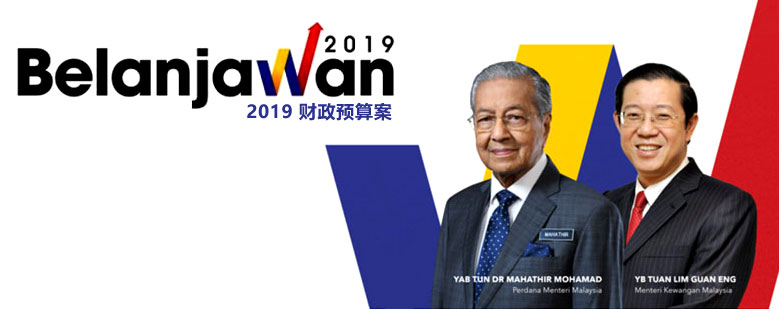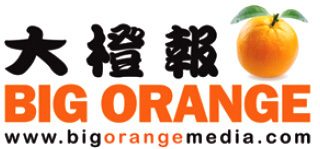Special Address By The Prime Minister On Current Economic Developments And Government’s Financial Position
Bismillahir Rahmanir Rahim
Assalamualaikum Warahmatullahi Wabarakatuh dan Salam 1 Malaysia
YAB Tan Sri Muhyidin Yassin
Timbalan Perdana Menteri
YB Dato’ Seri Ahmad Husni Hanadzlah
Menteri Kewangan Kedua
YBhg. Tan Sri Dr. Ali Hamsa
Ketua Setiausaha Negara
Introduction
1. First and foremost, let us express our infinite gratitude towards Allah SWT for with His blessings, we are able to gather this morning. We also pray for the great prophet Muhammad SAW.
2. We are here this morning with leaders and administrators, civil servants, industry players and corporate members, representatives of embassies, NGOs and volunteer groups, as well as the rakyat in this hall, and those watching TV or listening to the speech.
3. I would like to address some concerns on the current economic developments and the Government’s financial position. Lately, there have been reports, concerns and queries on issues, such as crude oil prices and performance of the ringgit.
4. The Government has been vigilantly monitoring the situation. In this regard, I will announce several proactive measures to realign our policies in line with the changing global economic scenario which is beyond our control. We are undertaking this to ensure that we continue to achieve creditable growth.
5. In other words, I am here today to announce specific and proactive measures to align ourselves with the recent global economic developments.
6. We are not in crisis. Indeed, we are taking preemptive measures following the changes in the external global economic landscape which is beyond our control.
7. This is to ensure that our economy continues to attain a respectable and reasonable growth. And at the same time, we want to ensure development for the nation and rakyat continues.
8. Indeed, 2014 was a year of trials and tribulations for us due to several tragedies.
9. At the end of last year, Malaysia was hit by unprecedented floods, affecting several states including Kelantan, Terengganu, Pahang, Kedah and Perak.
10. Although the floods were not so severe in Johor, Sabah and Sarawak, local communities in some areas were affected.
11. Thus, it is said that while man plans, Allah SWT plans too. And Allah SWT is the best of the planners.
12. The Government has always done its best to plan, formulate and implement policies and measures for the betterment of the rakyat.
13. It has been three months since the 2015 Budget was tabled. The Budget was formulated based on; First, price of Dated Brent was forecast at USD100 per barrel.
14. Second, Gross Domestic Product (GDP) growth estimated between 5% and 6%. Third, a stable exchange rate of RM3.20 against the US dollar; and
15. Fourth, 2015 world economic growth was projected at 3.4% and 3.9% by the World Bank and IMF respectively. Since then, the World Bank and the IMF have revised global growth to 3% and 3.8% respectively.
16. It should be noted that Budget 2015 was formulated based on strong economic fundamentals in 2014. Therefore, the fiscal deficit was forecast from 3.5% in 2014 to 3% of GDP in 2015.
17. However, the external situation has changed lately and we are impacted directly as Malaysia is among the largest trading nations in the world.
18. Compared to the situation a few months ago, the global economic landscape has since changed significantly. This necessitates us to review and clarify some of our earlier macro and fiscal assumptions.
19. Among the issues raised is the Government’s ability to achieve its fiscal targets for 2015. Given the current situation, the question is whether the economy and Government’s financial position will be affected.
20. In this special address, I will explain to the rakyat and announce several measures to mitigate the current economic situation.
21. As a responsible Government, we will continue to ensure economic development and safeguard the well-being of the rakyat.
Declining Crude Oil Prices
22. We are aware of the concerns among the rakyat, business community and analysts over the impact of the sharp fall in crude oil prices on the domestic economy.
23. Over the last six months, global crude oil prices have plunged more than 50%, among others, due to oversupply amid weak demand.
24. Leveraging advances in technology, shale oil and gas output has risen significantly in the US.
25. The situation is exacerbated by higher output from non-OPEC (Organisation of the Petroleum Exporting Countries). OPEC is also not willing to undertake production cuts in order to maintain its market share.
26. The Government has consistently reiterated that crude oil prices are beyond its control.
27. The benchmark Dated Brent crude oil price has dropped to around USD48 per barrel on 19 January 2015. And analysts expect oil prices to take quite a while to stabilise.
Benefits of Declining Crude Oil Prices
28. Lower crude oil prices benefit net oil importing countries like Malaysia.
29. For instance, the recent reduction in pump prices of petrol and diesel by 35 sen and 30 sen per litre, respectively will increase the overall disposable income of consumers by RM7.5 billion. Assuming that consumers spend 40% of this amount, it will boost private consumption by RM3 billion.
30. The World Bank estimates that lower crude oil prices will have a positive impact on world GDP. In fact, a 30% decline in oil prices could boost global GDP of up to 0.5%.
31. This bodes well for Malaysia’s manufactured products. Further, with the US economy strengthening, there will be sustained demand for our exports, in particular electrical and electronics (E&E) products.
Falling Crude Oil Prices will Reduce Federal Government Revenue
32. In contrast, falling crude oil prices will reduce Government revenue. The revenue is used for development purposes such as building of schools, roads and houses of worship. It is also used for other expenditures such as salaries of civil servants, cost of medicine in Government hospitals, agriculture subsidies and expenditure for security including armed forces, police and RELA.
33. In 2014, Dated Brent reached its highest level at USD115 per barrel on 19 June. Global crude oil prices have since plummeted by more than 50%.
34. Consensus among economists is that the forecast price of USD100 per barrel used in the 2015 Budget is no longer realistic. They now estimate the average oil price in 2015 to range from USD40 to USD70 per barrel.
35. The Government has therefore revised downwards its forecast for the average baseline oil price to USD55 per barrel for 2015.
36. Based on the crude oil price of USD100 per barrel, coupled with savings following the implementation of the managed float pricing mechanism for retail fuel prices effective from December 2014, the Government is expected to get an additional operating surplus of RM3.7 billion.
37. If crude oil price remains at USD100 per barrel, the Government will be able to accommodate all the measures announced in Budget 2015 with the fiscal deficit target not exceeding 3% of GDP.
38. However, at the forecast price of USD55 per barrel, there will be a revenue shortfall of RM13.8 billion.
39. If we compare the revised figures with Budget 2015 tabled in October last year, despite the savings of RM10.7 billion from the implementation of the managed float mechanism for retail fuel prices, the Government still faces a revenue shortfall of RM8.3 billion to accommodate the 2015 Budget measures.
40. Without any fiscal measures, the deficit will increase to 3.9% of GDP against the target of 3% for 2015.
41. This requires the Government to take measures to reduce the deficit, in line with the Government’s commitment towards fiscal consolidation.
42. Therefore, taking into account the revised estimates, we are revising the fiscal deficit target to 3.2% of GDP in 2015.
43. This is still lower than the fiscal deficit of 3.5% of GDP in 2014. In view of the external factors, we have to acknowledge that we may not be able to achieve the earlier fiscal target of 3% of GDP as announced. Of importance, is our commitment to continue reducing the fiscal deficit from 3.5% of GDP.
44. More importantly, we will not compromise on national development planning as it will enhance productive capacity of the economy. We will not neglect the rakyat’s welfare, particularly the bottom 40% of households.
Volatile Capital Flows and Ringgit
45. The fluctuations in the ringgit are influenced by developments in the global economy. Hence, the ringgit is not the only currency to have weakened against the US dollar. In fact, almost all currencies in the region have softened against the US dollar since September 2014.
46. The recent volatile capital flows and significant depreciation of the ringgit were also due to concerns over the impact of the sharp fall in oil prices on the Malaysian economy.
47. In relation to this, we must closely monitor the following: First, the current account in the balance of payments must remain in surplus. Second, continue with fiscal reforms and consolidation and Third, economic activity must be further diversified to enable us to cope with falling crude oil and commodity prices.
48. The Government is confident that the exchange rate will over time adjust to reflect the strong economic fundamentals. Of importance, our financial system continues to function in an orderly manner.
49. Most importantly, there has been no disruption to financial intermediation, with lending activities continuing smoothly. Businesses continue to have access to financing from banking institutions and the capital market.
50. In essence, greater policy flexibility, adequate international reserves, deeper and more diversified financial markets, sound banking system and strong domestic institutional investors such as the Employees Provident Fund will increase resilience to volatile capital flows.
Current Account Balance
51. The current account balance is directly related to the import and export of goods and services.
52. We are a crude oil exporter. Thus, when oil prices plummeted recently, there was a perception that export receipts will also decline drastically and result in a current account deficit.
53. Indeed, this perception is not correct. As a net crude oil exporter, we had a surplus of RM7.7 billion from January to November 2014.
54. However, we are an importer of petroleum products with a net import bill of RM8.9 billion during the same period.
55. If we include both crude oil and petroleum products, we are actually a net importer with a deficit of RM1.2 billion.
56. Therefore, the perception that Malaysia is a large oil producer is also not true.
57. However, if we factor in exports and imports of crude oil, and nett out petroleum products, then Malaysia is a net importer of petroleum. This does not include LNG, for which Malaysia is a net exporter.
58. Furthermore, we are still resilient as our diversified economy is able to weather the decline in oil prices.
59. With a better outlook for the global economy in 2015, the shortfall in commodity receipts is expected to be cushioned by increased demand for manufactured goods, such as electrical and electronic products, wood-based products, textile products and others, which account for 76% of total exports. Meanwhile, crude oil exports account for only 4.5% of total exports.
60. Therefore, the Government is confident that the current account will remain in surplus this year, although smaller in the range of 2% to 3% of Gross National Income or GNI. In 2014, the current account balance is estimated to record a surplus at 5.1% of GNI.
Strategies to Strengthen Economic Resilience
61. As I have explained earlier, there are several issues which will impact the domestic economy significantly. In the light of this, the Government will take measures to ensure economic growth remains on a strong trajectory. We are confident of achieving GDP growth in the range of 4.5% – 5.5% this year with the implementation of the following strategies:
• First: Ensure balanced, inclusive and sustainable economic growth;
• Second: Continue fiscal reforms and consolidation; and
• Third: Provide assistance to the rakyat and business community to rebuild infrastructure damaged by floods.
62. First Strategy: Ensuring Balanced, Inclusive and Sustainable Economic Growth
To boost exports of goods and services, the following measures will be taken:
First, actively promote import-substitution services such as shipping, port, education and professional services. This will reduce dependence on foreign sources for procurement of goods and services;
Second, accelerate implementation of recommendations of National Export Council:
• Enable exporters, especially SMEs, to be connected to new clients in new markets under an international linkage programme using market linkers and industry specialists;
• Intensify export promotion programmes in 46 countries covering Asia, Europe, the Middle East and the US;
• SME Bank will introduce SME-Go, an export programme for SMEs; and
• Leverage the Services Export Fund (SEF) and promotional programmes for SMEs to enhance sustainability of projects abroad.
Third, frontload implementation of Logistics & Trade Facilitation:
• Improve last-mile connectivity to Port Klang including access road, railway network and traffic management system;
• Upgrade Padang Besar railway terminal;
• Improve operational efficiency of import and export processes; and
• Establish a hub and spoke system for air transport.
Fourth, intensify tourism industry;
Fifth, review levy on foreign workers; and
Sixth, waiver of visa fee for tourists from, among others, China.
To enhance private consumption, the Government will implement the following initiatives:
First, give priority to local class G1 (class F), G2 (class E) and G3 (class D) contractors registered with CIDB to undertake reconstruction works in their respective flood affected areas;
Second, intensify promotion of “Buy Malaysia” products;
Third, increase frequency and extend shopping hours of nationwide mega sales;
Fourth, accelerate promotion of domestic tourism through competitive domestic air fares; and
Fifth, encourage the private sector to leverage benefits from the establishment of the ASEAN Economic Community.
In efforts to accelerate private investment, the Government will:
First, set up a Services Sector Guarantee Scheme amounting to RM5 billion for SMEs in the services sector, with maximum financing of RM5 million and 70% Government guarantee;
Second, encourage GLCs and GLICs to invest domestically;
Third, reduce cost of doing business:
• postpone the scheduled electricity tariff hike in 2015; and
• postpone the scheduled gas price hike for the industrial sector in 2015.
Fourth, allocate 30% of the annual procurement budget of Government agencies and GLCs for goods and services to local SME producers; and
Fifth, increase local goods and services in Government procurement.
63. Second Strategy: Continuing Fiscal Reforms and Consolidation
Among the revenue enhancement measures include:
First, broaden the tax base by encouraging companies to register with the Royal Malaysian Customs to enable them to charge and collect GST. This is expected to contribute an additional RM1 billion in GST collection. As at mid-January 2015, more than 304,000 companies have registered; and
Second, realise additional dividends from GLCs and GLICs as well as other Government entities amounting to RM400 million.
The Government will undertake the following expenditure rationalisation measures:
First, optimise outlays on supplies and services, especially overseas travel, events and functions and use of professional services. This will result in savings of RM1.6 billion;
Second, defer the 2015 Program Latihan Khidmat Negara to enable the programme to be reviewed and enhanced, with savings expected at RM400 million;
Third, review transfers and grants to statutory bodies, GLCs and Government Trust Funds, particularly those with a steady revenue stream and high reserves. This measure will result in savings of RM3.2 billion; and
Fourth, reschedule the purchase of non-critical assets, especially office equipment, software and vehicles, with an expected savings of RM300 million.
64. Third Strategy: Assisting the Rakyat and Business Community as well as Rebuilding Infrastructure Damaged by the Floods
The recent floods affected around 400,000 people nationwide. The latest estimate of damage to infrastructure is about RM2.9 billion.
Among the measures that have been taken and will be implemented to assist flood victims include:
The Government has provided an initial allocation of RM500 million for rehabilitation works and welfare programmes for flood victims. This is in addition to the existing allocation to the National Security Council, bringing the total to RM787 million;
Provide an initial allocation of RM800 million for repair and reconstruction of basic infrastructure such as schools, hospitals, roads and bridges;
Provide RM893 million under the 2015 Budget for flood mitigation projects;
Build 8-ft stilt houses for those who have land and whose homes were damaged by the floods;
Hand over 1,000 units of completed low-cost houses in Gua Musang;
Provide RM500 per flood affected household; and
Provide RM5,000 for the next-of-kin who have lost family members.
65. For businesses affected by floods:
• Provide an additional RM100 million to TEKUN and RM100 million to AIM to provide soft loans to support SMEs and microenterprises.
66. BSN, Agrobank, SME Bank, TEKUN and AIM to defer existing loan repayments of up to six months.
67. Bank Negara Malaysia will establish a RM500 million Special Relief Facility for SME loan financing at a concessionary rate of 2.25% with a grace period of up to six months through banking and development financial institutions;
68. Bank Rakyat will offer a personal loan scheme of up to RM50,000 at a financing rate as low as 3.9%, while loan repayments will start after six months from loan disbursement;
69. A sum of RM500 million will be provided by financial institutions with a 70% guarantee under a Flood Relief Loan Guarantee Scheme (Skim Jaminan Pinjaman Bantuan Banjir) (SJPBB). The Scheme will be administered by Prokhas; and
70. Exempt levy payment to the Human Resources Development Fund (HRDF) for a period of six months for SMEs in the flood affected areas with effect from 1 February 2015.
Conclusion
To sum up, I would like to highlight 6 key take-aways:
First, we are neither in a recession nor a crisis as experienced in 1997/1998, and 2009 which warranted stimulus packages;
Second, the strategies announced by the Government are proactive initiatives to make the necessary adjustments following the challenging external developments which are beyond our control. This is a reality check following, among others, declining global crude oil prices;
Third, the current account balance is expected to remain in surplus;
Fourth, the financial markets remain orderly and resilient. Although the ringgit has depreciated, it is expected to stabilise over time to reflect the strong economic fundamentals;
Fifth, Development Expenditure of RM48.5 billion for 2015 will be maintained and spent.
This includes projects for the people economy such as public housing, flood mitigation, water supply, electricity and public transport infrastructure such as Pan-Borneo Highway.
In addition, projects such as the MRT Line 2, LRT 3, High-Speed Rail Kuala Lumpur-Singapore and RAPID Pengerang will be continued.
In May, I will table the Eleventh Malaysia Plan (11MP) to outline the development expenditure until 2020.
Sixth, Operating Expenditure is expected to be reduced by RM5.5 billion through reprioritising expenditure.
71. In concluding, let us pray and hope that Allah SWT will always assist us in our efforts to find solutions.
72. In all of human nature, to Allah SWT we submit and surrender to His will. Of importance, we stand together in solidarity to face challenges.
73. Surely, with every difficulty there is relief.
74. Hopefully God Almighty will continue to protect our beloved country from harm and danger.
Thank you.






























